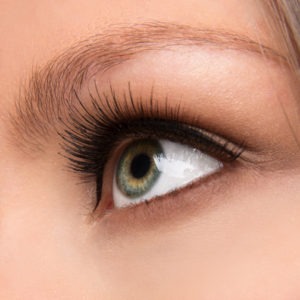 Thyroid Eye Disease (TED), also known as Graves’ eye disease, is a condition that affects the eyes and surrounding tissues in individuals with an overactive thyroid gland. This autoimmune disorder can cause various symptoms such as bulging eyes, redness, swelling, and vision problems. If left untreated, TED can lead to permanent vision loss. However, there are several treatment options available that can help manage the symptoms and improve the overall quality of life for those living with this condition. In this blog post, we will discuss some of the most effective treatment options for thyroid eye disease, helping you see clearer and feel better. Khan Eyelid and Facial Aesthetics, led by oculoplastic and reconstructive surgeon Dr. Tanya Khan, provides treatment of thyroid eye disease to patients in Plano, Dallas, Austin, Texas, and surrounding locations.
Thyroid Eye Disease (TED), also known as Graves’ eye disease, is a condition that affects the eyes and surrounding tissues in individuals with an overactive thyroid gland. This autoimmune disorder can cause various symptoms such as bulging eyes, redness, swelling, and vision problems. If left untreated, TED can lead to permanent vision loss. However, there are several treatment options available that can help manage the symptoms and improve the overall quality of life for those living with this condition. In this blog post, we will discuss some of the most effective treatment options for thyroid eye disease, helping you see clearer and feel better. Khan Eyelid and Facial Aesthetics, led by oculoplastic and reconstructive surgeon Dr. Tanya Khan, provides treatment of thyroid eye disease to patients in Plano, Dallas, Austin, Texas, and surrounding locations.
Understanding Thyroid Eye Disease: Causes and Symptoms
Thyroid Eye Disease (TED) is a condition that occurs when the immune system mistakenly attacks the tissues surrounding the eyes. This autoimmune disorder is often associated with an overactive thyroid gland, known as hyperthyroidism. When the thyroid gland produces too much thyroid hormone, it can lead to a wide range of symptoms, including the development of TED.
The exact cause of TED is not fully understood, but it is believed to be a result of an abnormal immune response. In individuals with an overactive thyroid gland, the immune system may mistakenly target the tissues around the eyes, leading to inflammation and swelling. This can cause the eyes to bulge forward, a condition known as proptosis.
Common symptoms of TED include bulging eyes, redness, swelling, dryness, double vision, and eye discomfort. Some individuals may also experience blurred or reduced vision. The severity of symptoms can vary from person to person.
It’s important to note that not all individuals with hyperthyroidism will develop TED, and the severity of TED symptoms is not always related to the severity of thyroid dysfunction. If you are experiencing any of these symptoms, it’s important to consult with a healthcare professional for an accurate diagnosis and appropriate treatment.
The Available Treatments for Thyroid Eye Disease
If you have been diagnosed with Thyroid Eye Disease (TED), you may be wondering about the available treatment options. Fortunately, there are several treatments that can help manage the symptoms and improve your quality of life.
One of the first treatment options for TED is medication. Your healthcare provider may prescribe corticosteroids to reduce inflammation and swelling around the eyes. These medications can help alleviate symptoms such as redness, swelling, and discomfort. In some cases, immunosuppressive drugs may be recommended to suppress the abnormal immune response.
Another non-surgical treatment option is the use of prisms or special glasses to help correct double vision. These devices can be a temporary solution until other treatments take effect.
In more severe cases, surgical procedures may be necessary. These procedures aim to correct any abnormalities in the eye muscles and reduce proptosis. Surgical options include orbital decompression surgery, strabismus surgery, and eyelid surgery.
It’s important to consult with your healthcare provider to determine the best treatment plan for you. They will consider the severity of your symptoms, overall health, and individual circumstances. With the right treatment, you can manage the symptoms of TED and improve your overall quality of life.
Surgical Procedures in Treating Thyroid Eye Disease
Surgical procedures can be an effective option for treating Thyroid Eye Disease (TED) in more severe cases. These procedures aim to correct any abnormalities in the eye muscles and reduce proptosis, helping to alleviate symptoms and improve overall eye function.
One surgical option is orbital decompression surgery. This procedure involves removing some of the bone and/or fatty tissue behind the eye to create more space, reducing the pressure on the optic nerve and allowing the eye to move back into its normal position.
Another surgical option is strabismus surgery. This procedure is used to correct misalignment of the eyes, which can cause double vision and eye discomfort. The surgeon adjusts the eye muscles to align the eyes properly and improve vision.
Eyelid surgery, also known as blepharoplasty, can be performed to address eyelid retraction or drooping, which are common symptoms of TED. The surgeon removes or repositions excess tissue to restore a more natural appearance and improve eyelid function.
Frequently Asked Questions About Thyroid Eye Disease and Its Treatments
What are the most common symptoms of Thyroid Eye Disease?
Thyroid Eye Disease (TED) can cause a range of symptoms, including bulging eyes, redness, swelling, dryness, double vision, and eye discomfort. Some individuals may also experience blurred or reduced vision. The severity of symptoms can vary from person to person. It’s important to note that not all individuals with hyperthyroidism will develop TED, and the severity of TED symptoms is not always related to the severity of thyroid dysfunction.
Are there any non-surgical treatments for Thyroid Eye Disease?
Yes, there are non-surgical treatment options for TED. Medication, such as corticosteroids, can be prescribed to reduce inflammation and swelling around the eyes. These medications can help alleviate symptoms like redness, swelling, and discomfort. In some cases, immunosuppressive drugs may also be recommended to suppress the abnormal immune response. Additionally, the use of prisms or special glasses can help correct double vision.
When are surgical procedures necessary for treating Thyroid Eye Disease?
Surgical procedures for TED are typically reserved for more severe cases where non-surgical treatments have not provided adequate relief. Procedures like orbital decompression surgery can create more space behind the eye, reducing pressure on the optic nerve and allowing the eye to move back into its normal position. Strabismus surgery is used to correct misalignment of the eyes, and eyelid surgery can address eyelid retraction or drooping.
Can Thyroid Eye Disease be cured?
Thyroid Eye Disease cannot be cured, but the symptoms can be managed with appropriate treatment. The goal of treatment is to alleviate symptoms, reduce inflammation and swelling, and improve eye function. With the right treatment plan, individuals with TED can experience relief from their symptoms and an improved quality of life.
How can I find the right treatment plan for my Thyroid Eye Disease?
Contact Khan Eyelid and Facial Aesthetics and Oculoplastic & Reconstructive Surgeon Dr. Tanya Khan Today to Schedule an Appointment
For more information about procedures and treatments at Khan Eyelid and Facial Aesthetics by Ophthalmic surgeon Dr. Tanya Khan. Click here to contact us.
Taking patients from in and around Dallas, Plano, Fort Worth, Grapevine, Garland, Mesquite, Carrollton, Irving, Frisco, Texas and more.









Schedule a Consultation: 972-EYE-LIDS (393-5437)